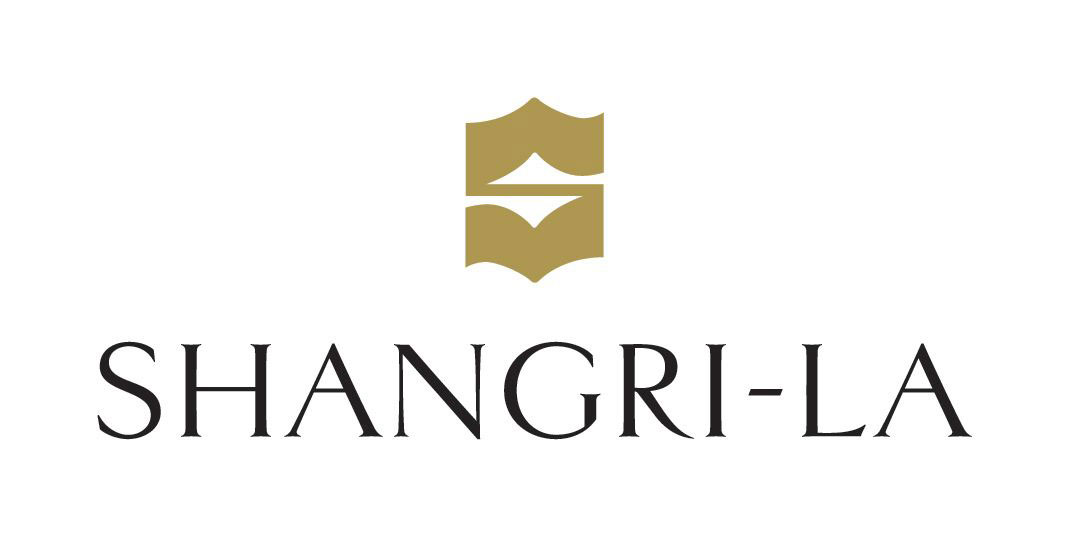Shangri-La Announces 130 Million USD Investment In Renovations Over The Next Two Years

Shangri-La Hotels and Resorts announces that it will invest US$130 million in renovations over the next two years. The investment is part of its strategy to reinforce Shangri-La as the leading luxury hotel company in Asia and to enhance its legendary hospitality.
Renovation projects are being phased in with minimum disruption to guests at 14 of the group's 38 properties. Major renovations are ongoing at the Shangri-La Hotel, Kuala Lumpur; the Shangri-La Hotel, Bangkok; the Makati Shangri-La Hotel; and the China World Hotel, Beijing; and will soon begin at the Kowloon Shangri-La, Hong Kong.
New Look for Shangri-La
The renovation programme will bring a rich contemporary look to Shangri-La's hotels, which are renowned for luxurious interiors. The elegant new look will extend beyond guest rooms and public areas to encompass everything from staff uniforms to collateral and hotel signage. A major component of the programme is the development of innovative restaurants and lounges, with 12 new concepts debuting in 2002 and others under development.
Renovation projects include the following:
- China World Hotel, Beijing: rooms, lobby, café restaurant, health club and Horizon Club lounge
- Fiji Mocambo: guest rooms
- Island Shangri-La, Hong Kong: selected guest rooms
- Kowloon Shangri-La, Hong Kong: rooms, lobby, restaurants and bars
- Makati Shangri-La Hotel, Manila: rooms, lobby, lobby lounge, café restaurant and Horizon Club Lounge
- Shangri-La Golden Flower Hotel, Xian: guest rooms
- Shangri-La Hotel, Bangkok: lobby, lobby lounge, bar, café restaurant, Krungthep Wing and Shangri-La Wing rooms, and Horizon Club rooms and lounge. Spa to be added in 2003
- Shangri-La Hotel, Kuala Lumpur: rooms, lobby, lobby lounge, Horizon Club lounge, restaurants and bars
- Shangri-La Hotel, Singapore: Valley Wing
- Shangri-La's Mactan Island Resort, Cebu: guest rooms
- Shangri-La's Rasa Sayang, Penang: rooms and café restaurant
- Shangri-La's Rasa Sentosa Resort: spa
- Shangri-La's Tanjung Aru Resort, Kota Kinabalu: Tanjung Wing and new spa
- Traders Hotel, Singapore: guest rooms
Commenting on the renovation programme, the company's Chief Executive Officer and Managing Director, Giovanni Angelini, said: "With the strategic investment in renovations, we will further enhance our hotels' appeal by creating a dynamic new look. The innovative designs will strengthen Shangri-La's reputation for offering luxurious accommodation and Asian-style hospitality."
Shangri-La Hotels and Resorts
Shangri-La set the standard for Asian hospitality when it launched its first hotel, the Shangri-La Hotel, Singapore, in 1971. Today, the award-winning company is the largest Asian-based luxury hotel group in the region, with nearly 20,000 rooms and 38 properties located in the Chinese mainland, Fiji, Hong Kong SAR, Indonesia, Malaysia, Myanmar, Philippines, Singapore, Taiwan and Thailand.
For more information on Shangri-La or hotel reservations, please visit www.shangri-la.com.
Renovation Programme Fact SheetOverview:
Shangri-La Hotels and Resorts will invest US$130 million in renovations in 2002 and 2003. The renovations will bring a rich contemporary new look to the hotels and will extend beyond rooms and public areas to encompass everything from employee fashion to collateral and signage. Renovations are being phased in with minimum disruption to guests at 14 of the company's 38 properties.
Designers:
A creative team of Shangri-La executives and international designers are overseeing different aspects of the renovation programme.
Well-known talents such as West Palm Beach, Florida-based Bilkey Llinas, Hong Kong-based Leese Robertson Freeman, Ltd. (LRF), Singapore-based Warner Wong, Singapore-based Wilson Associates and J. Lee Rofkind from Hong Kong-based BUZdesign have been hired to work on public area and room design for individual properties. New York-based Adam D. Tihany, Tokyo-based Super Potato, Charles Robertson of LRF and Warner Wong are designing new restaurants, lobby lounges and bars.
Other designers include Kuala Lumpur-based CKP, for kitchen design; Bangkok-based Rene Ozorio for tabletops; Hong Kong-based Viktor Arzate for employee fashion, tabletops, collateral and signage; and Australia-based Erin Corlette and Dallas, Texas-based David Carter for signage and collateral. Stylish new clothing for employees is being created by fashion designers such as Wykidd Song and Anne Kelly from Singapore-based Club 21 and Mineo Masaru, who is based in Tokyo.
Public Areas:
Shangri-La hotels are known for their lush garden landscapes and sprawling marble lobbies decorated with stunning original Asian artwork and dramatic Viennese crystal chandeliers. Designers are integrating these classic Shangri-La hallmarks with elegant contemporary designs unique to each hotel.
These range from the stunning "tropical oasis" effect being created in the lobby of the Shangri-La Hotel, Kuala Lumpur using water gardens, a waterfall and picturesque landscaping, to the striking two-storey bar being built at the Shangri-La Hotel, Bangkok. The bar will overlook the Chao Phrya River and feature "flying angels" - servers who will "fly" from the first floor's Island Bar to the mezzanine via cables attached to their specially designed harnesses.
Guest Rooms:
For the new look of its rooms, Shangri-La is focusing on both the aesthetic and functional needs of guests. Rooms will exude modern luxury rather than hard-edged minimalism and will be decorated with contemporary furnishings made from warm-hued woods. Platform beds are being introduced to rooms, along with custom-designed Shangri-La mattresses and new bedding. Duvets, curtains and throw pillows will be made from luxurious fabrics and done in a soothing, earthy color palette of taupe, cream, golden brown and beige. Brighter tones such as burnt sienna and sea green will be used as accent colors.
The hotels will each feature different decorative elements and designs relevant to their setting. For example, the Shangri-La Hotel, Kuala Lumpur's Horizon Club rooms will have abstract shaped mirrors, art nouveau table lamps and separate silk-screen shower cubicles, while the Shangri-La Hotel, Bangkok will weave opulent Thai silk into its room décor through wall hangings and upholstery.
Rooms will also be outfitted with the latest technology. A specially designed "office area" for city hotels will include an ergonomic desk with international plugs, data port and other executive amenities. Some new desks will feature glass desktops that swivel out to create an additional L-shaped working or dining area. Resorts will feature a "relaxation area" intended for lounging. All renovated rooms will feature flat-screen Philips TVs; standard rooms will have 25-inch flat screens, and suites will have 29-inch flat screen TVs.
Spa Bathrooms:
New Shangri-La bathrooms will feature white and cream marble, gleaming chrome fixtures and glass-enclosed showers with spa-style showerheads. Some bathrooms will have striking transparent sink basins and countertops.
Restaurants and Lounges:
A major component of the new look for Shangri-La is the development of innovative restaurants and lounges, with 12 new concepts debuting in 2002 and others under development. These dining and entertainment venues will be vibrant destinations for guests and locals, thereby creating a "buzz" that will extend throughout the hotels. The model for Shangri-La's casual international restaurants is cafe TOO, which recently opened at the Island Shangri-La, Hong Kong. The 252-seat cafe TOO seduces the eye with its blend of organic earth tones, colorful displays, dramatic lighting and modern white oak furniture. The main attraction is cafe TOO's seven open kitchens, each featuring presentations of beautifully arranged dishes.
Similar concepts are being designed for the Shangri-La Hotel, Kuala Lumpur; the China World Hotel, Beijing; and the Kowloon Shangri-La, Hong Kong. Individual designers will create a unique look for each restaurant.
In addition to lobby lounges, selected Horizon Club lounges are also being renovated. The Horizon Club at the Makati Shangri-La Hotel, Manila will feature a more social version of the communal table with a sleek new "interactive" bar. The attractive oval-shaped bar will be set in the middle of the lounge, and guests will be able serve themselves and mingle comfortably and casually while making their drinks.
Shangri-La Spa:
Shangri-La is developing a new spa concept that will be introduced at Shangri-La's Rasa Sentosa Resort, Singapore; the Shangri-La Hotel, Bangkok; the Pudong Shangri-La Hotel, Shanghai, and Shangri-La's Tanjung Aru Resort in Kota Kinabalu. The concept is based on the mythic Shangri-La found in James Hilton's novel "Lost Horizon." Designed as tranquil havens, Shangri-La's spas will offer a serene environment in which spa-goers can relax, revitalise and reflect in order to find harmony and balance.
The spas will soothe both the spirit and body and indulge all senses. Colour therapy will guide the selection of lighting and colour schemes, and the use of pure materials such as wood and textured stone, along with ethnic elements, will create a warm, welcoming ambiance. Water's healing and restorative properties will be a major focus of the spas, which will feature water fountains, water gardens and hydrotherapy treatments. The individual treatment rooms will be mini sanctuaries; some will offer private bathrooms, steam cabinets and whirlpool baths. Spa-goers will be able to experience a full range of holistic and natural therapies, with the spa menus featuring the finest treatments available for pampering, detoxing and healing. Shangri-La spas will also offer a menu of herbal drinks and healthy cuisine.
Shangri-La Hotels and Resorts:
Shangri-La Hotels and Resorts is the largest Asian-based luxury hotel group in the region, with nearly 20,000 rooms and 38 properties located in the Chinese mainland, Fiji, Hong Kong SAR, Indonesia, Malaysia, Myanmar, Philippines, Singapore, Taiwan and Thailand. For more information or hotel reservations, please visit www.shangri-la.com.
